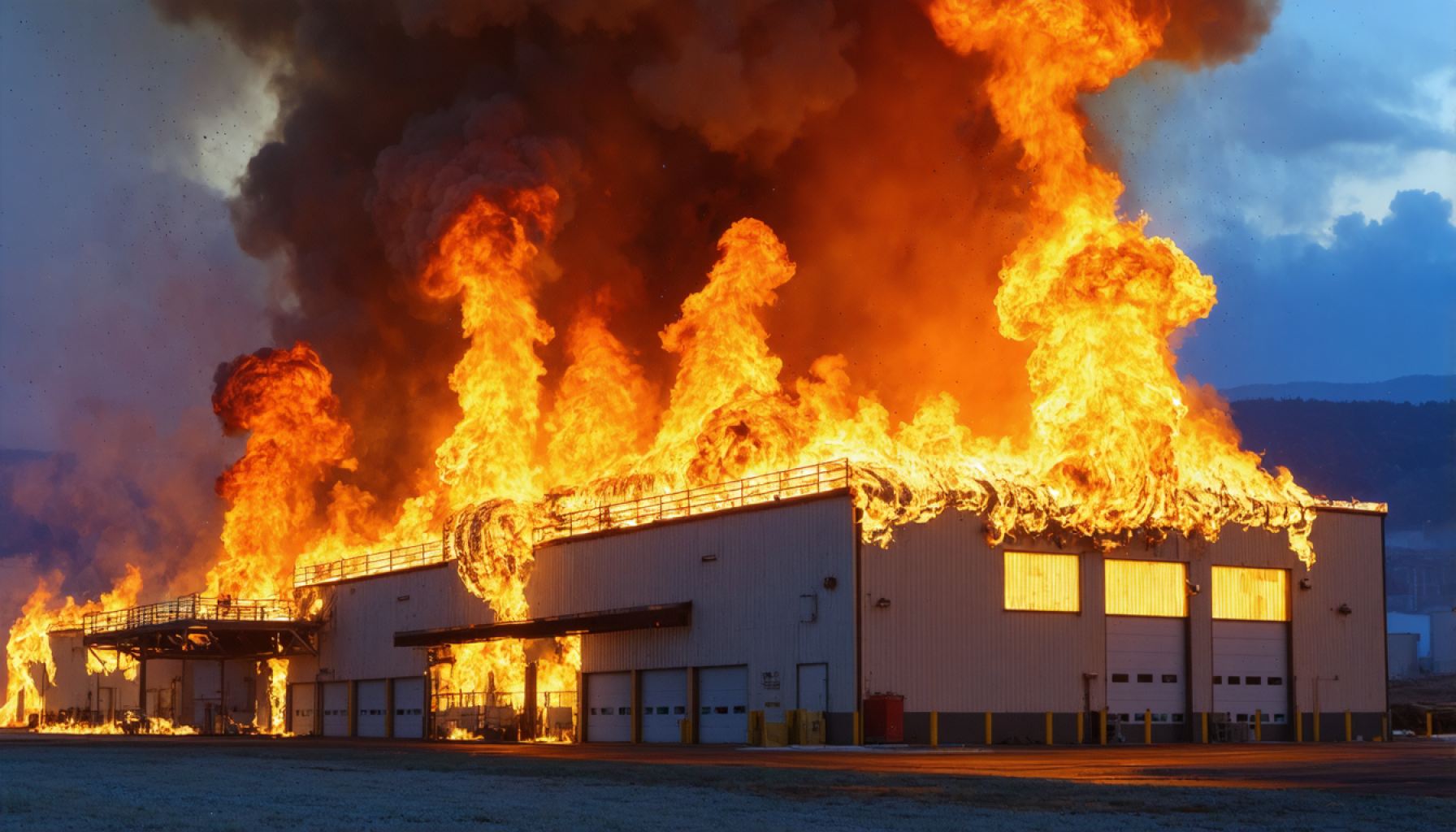- A massive fire at Moss Landing, the largest lithium-ion battery storage site, forced over 1,200 residents to evacuate in January 2025, leading to a significant legal battle.
- The lawsuit alleges negligence in safety standards by Vistra Energy and other corporations, exacerbating toxic risks to the community.
- Renowned environmental advocate Erin Brockovich joins the legal effort, emphasizing the demand for accountability and justice.
- Residents report health issues like nosebleeds and headaches due to exposure to hazardous materials such as hydrogen fluoride, cobalt, and manganese.
- The case highlights the tension between advancing renewable energy and ensuring public safety and transparency.
- The incident underlines the importance of integrating safety with sustainability as California moves towards renewable energy solutions.
Fiery chaos erupted at Moss Landing, home to the vast intricacies of the world’s largest lithium-ion battery energy storage site. On a brisk January day in 2025, flames licked the skies as more than 1,200 residents found themselves fleeing their homes in Monterey County. This inferno has since ignited a fierce legal storm against Vistra Energy and a cluster of corporate giants, thrusting the community into a battle for accountability.
The acrid smoke still hangs in the air, a poignant reminder of what the lawsuit argues as glaring neglect in safety standards. This lawsuit, now supported by an environmental champion renowned for her unwavering dedication to justice, thrusts energy goliaths into the legal spotlight. The storied Erin Brockovich, known for tearing down corporate facades when public health is at stake, stands alongside Singleton Schreiber—her resolve as unyielding as ever.
Residents didn’t merely evacuate; they inhaled the toxic repercussions of lax safety—hydrogen fluoride mingling with the air, while invisible hands of cobalt and manganese threatened the soil and waters. The lawsuit paints a grim picture: nosebleeds, relentless headaches, and health woes that etched themselves on the community with an unsettling permanence.
“Communities deserve better,” declares the lead attorney, pointing a finger at the energy industry, demanding a shift towards safety and transparency. This legal fight isn’t just about compensation; it’s a clarion call to rethink the balance between innovative energy solutions and public safety.
As California marches towards renewable frontiers, Moss Landing’s smoldering embers remind us that energy sustainability must never eclipse our humanity. The quest for cleaner energy shouldn’t come at the cost of the people it promises to power.
Lessons from Moss Landing: Navigating the Complexities of Energy Storage Safety
How-To Steps & Life Hacks
To enhance safety in energy storage facilities, consider these steps:
1. Implement Robust Monitoring Systems: Deploy advanced sensors and AI-driven monitoring to detect early signs of system failure or overheating.
2. Regular Maintenance & Audits: Conduct periodic audits and maintenance checks to ensure all safety standards are consistently met.
3. Community Safety Drills: Engage local communities with regular safety drills to prepare for potential emergencies.
4. Guard Against Chemical Hazards: Establish and enforce strict protocols for handling and containment of hazardous chemicals like hydrogen fluoride.
Real-World Use Cases
Energy storage sites are crucial for smoothing out the variability of renewable energy sources such as solar and wind. However, mishaps like those at Moss Landing highlight the potential risks if not managed properly.
One successful initiative can be observed in Queensland, Australia, where stringent safety protocols at the Hornsdale Power Reserve—another large battery storage facility—have helped avoid major incidents.
Market Forecasts & Industry Trends
The global energy storage market is expected to grow from $10 billion in 2020 to over $40 billion by 2030, driven by increased adoption of renewables. Regions like California are leading this charge, but safety concerns are prompting both regulatory scrutiny and innovation in related technologies.
Reviews & Comparisons
Compared to other storage technologies, lithium-ion batteries offer superior energy density but pose a higher fire risk. Alternatives such as flow batteries, though less developed, promise a safer, albeit costlier, future without the risks associated with thermal runaway.
Controversies & Limitations
Incidents like the Moss Landing fire spotlight the limitations in current safety standards for large-scale battery storage. The balance between rapid deployment of renewable technologies and safeguarding public health remains contentious.
Features, Specs & Pricing
Large-scale lithium-ion systems like those at Moss Landing are typically valued for their high efficiency (up to 95%) and scalability. However, costs are variable and can be influenced by both battery chemistry and safety infrastructure.
Security & Sustainability
To improve security and sustainability:
– Design Redundancy: Include fail-safes and backups in design to prevent cascading failures.
– Sustainable Materials: Research into alternative materials with a reduced environmental footprint is crucial.
Insights & Predictions
As the industry matures, expect an increase in hybrid systems that combine lithium-ion with alternative technologies to balance efficiency, cost, and safety. Investment in research for safer materials and methods will become a priority.
Tutorials & Compatibility
Invest in training for onsite personnel regarding emergency procedures tailored to battery systems’ unique risks. Ensure compatibility of integrated monitoring systems with existing infrastructure for heightened safety.
Pros & Cons Overview
Pros:
– High energy efficiency
– Rapid response time
– Scalability
Cons:
– Risk of thermal runaway and chemical hazards
– High upfront costs for comprehensive safety systems
Actionable Recommendations
1. Invest in the latest fire suppression technologies specifically designed for energy storage facilities.
2. Foster partnerships with local emergency services to ensure coordinated and effective response capabilities.
3. Prioritize transparent communication with communities near these facilities to build trust and preparedness.
For more information on renewable energy and safety standards, visit energy.gov.
By addressing these areas, energy providers can pave the way towards a more secure and sustainable future, while safeguarding the communities they serve.
